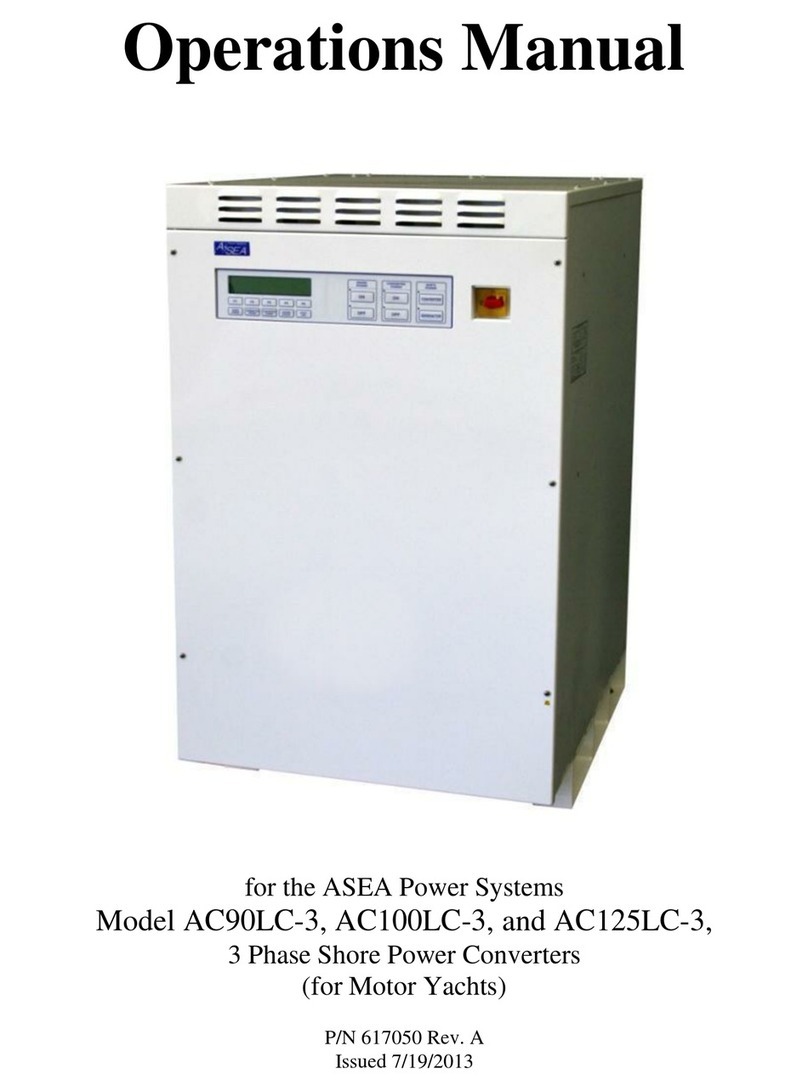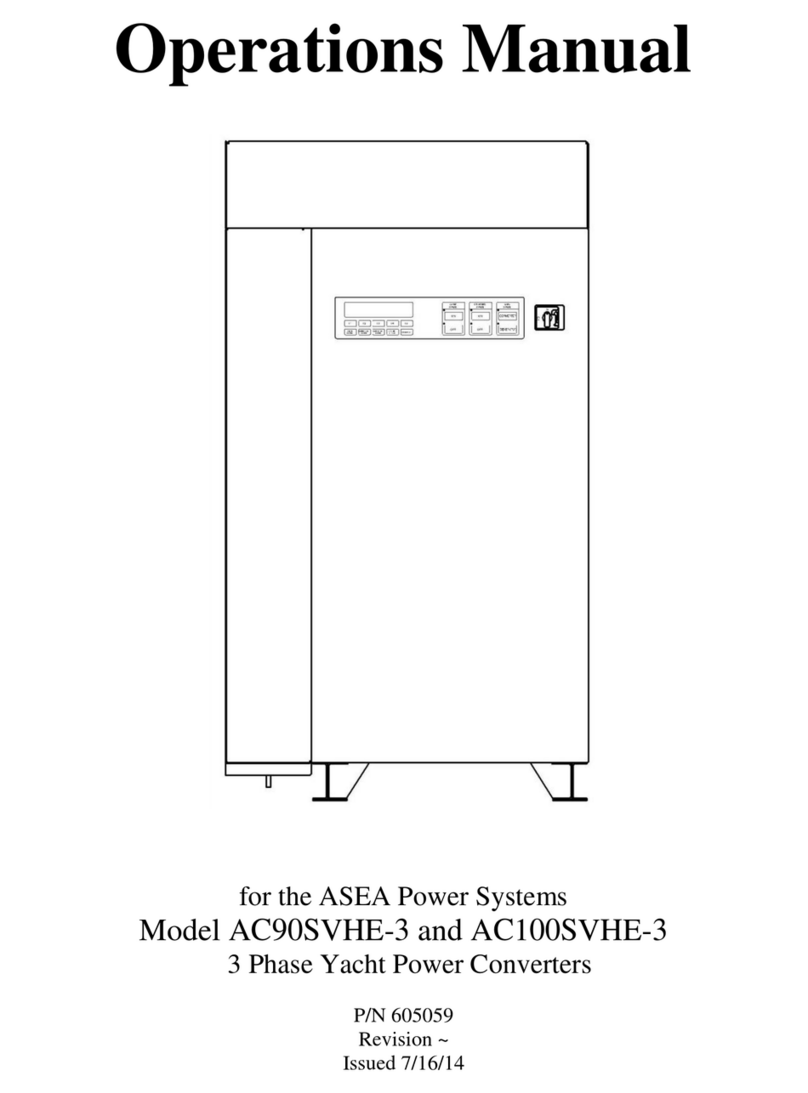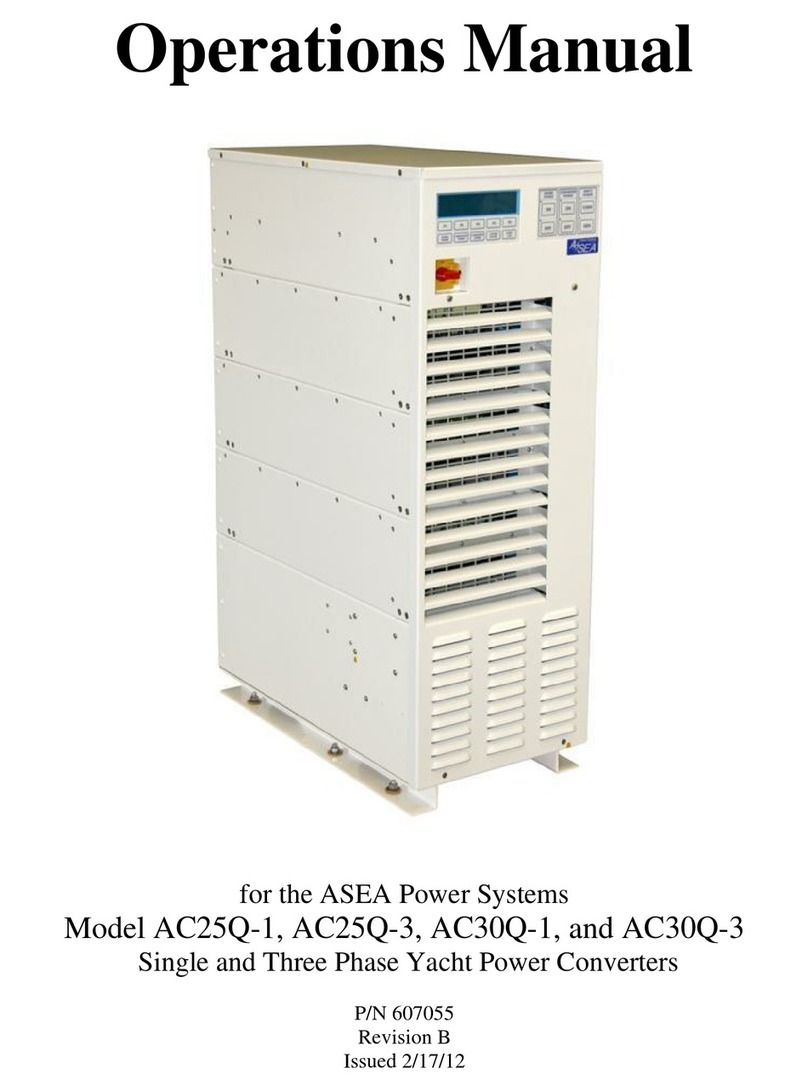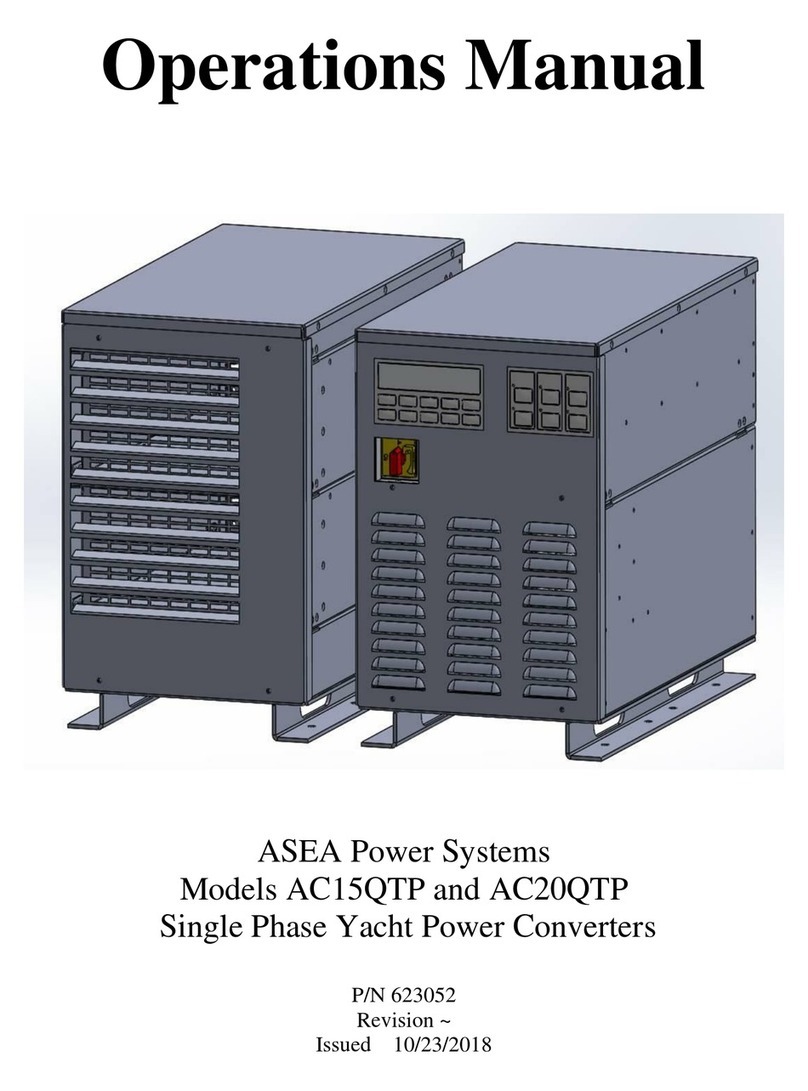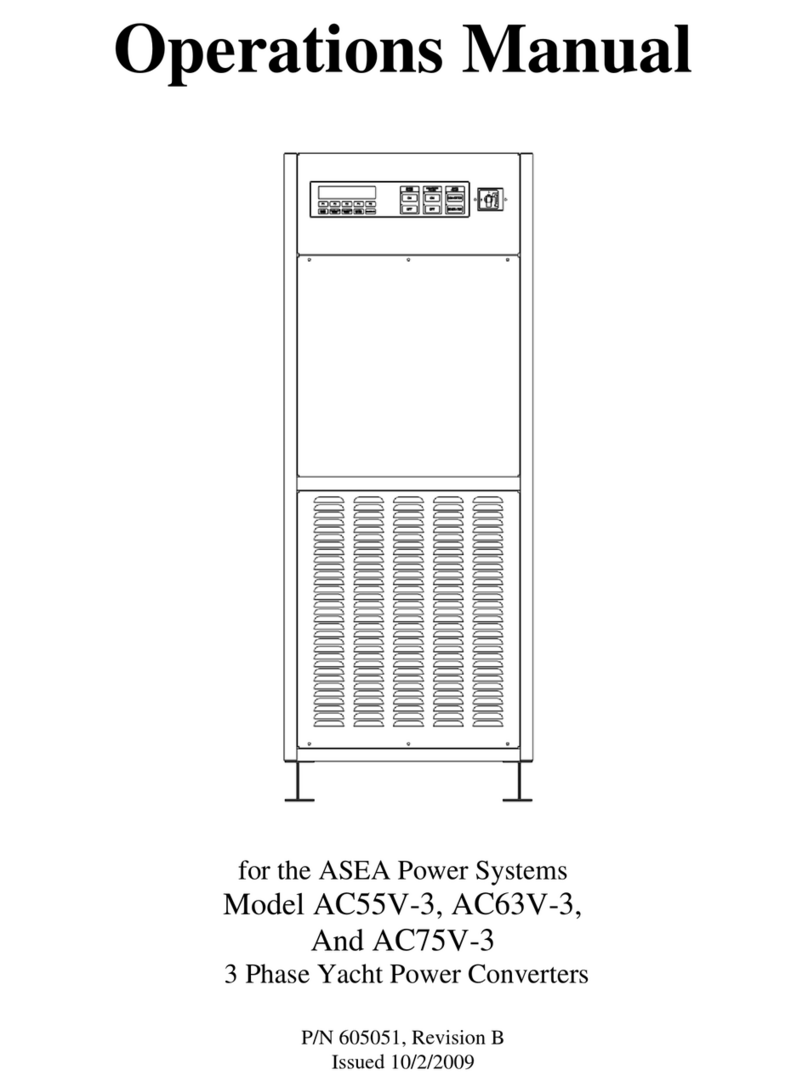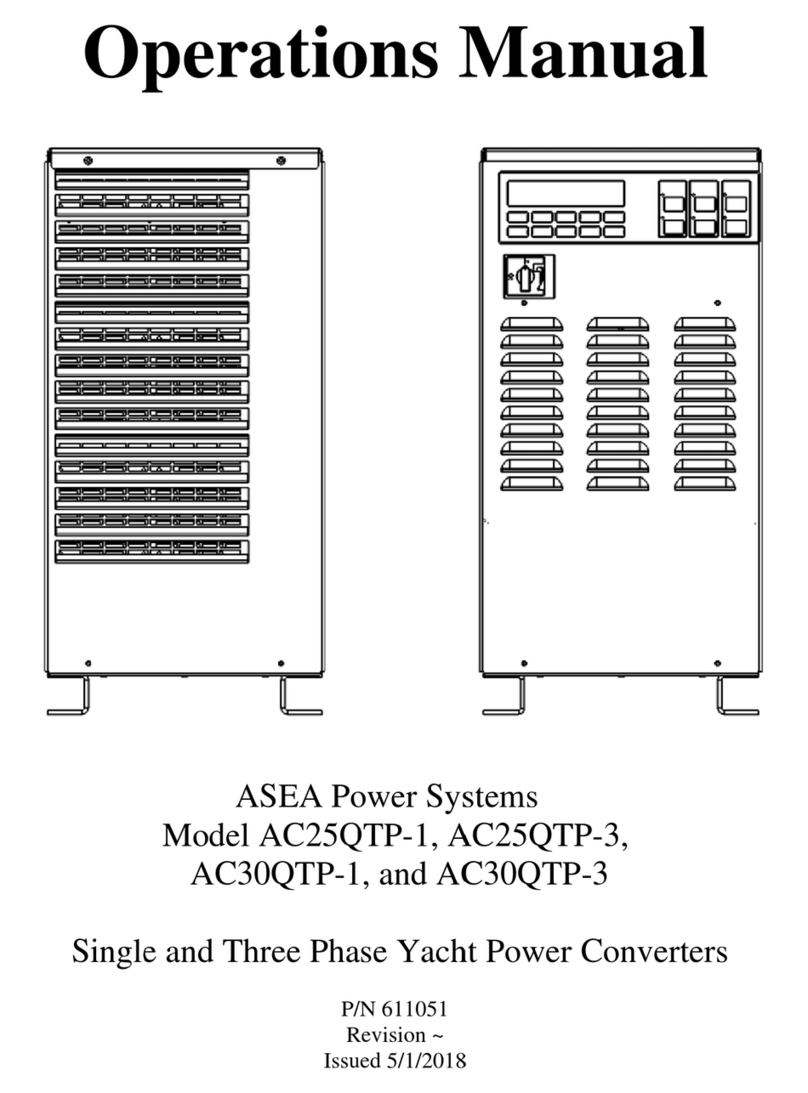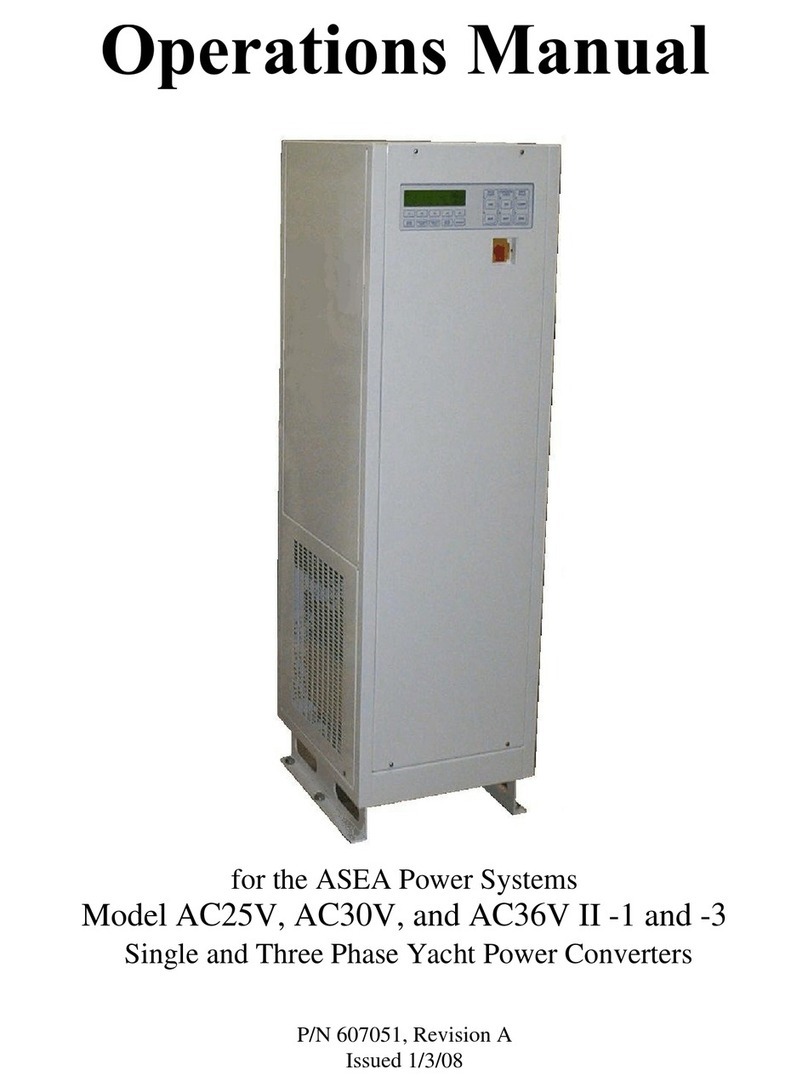AC36NVHE-3 / AC45NVHE-3 / AC50NVHE-3 Operations Manual....4
TABLE OF CONTENTS
CERTIFICATION .......................................................................................................................... 2
WARRANTY ................................................................................................................................. 2
1. USING THIS MANUAL.................................................................................................... 3
2. SAFETY NOTICES............................................................................................................ 6
3. INTRODUCTION TO THE CONVERTERS.................................................................... 8
4. SPECIFICATIONS........................................................................................................... 10
4.1 ELECTRICAL SPECIFICATIONS ..................................................................... 10
4.1.1 Input Service............................................................................................. 10
4.1.2 Output Service .......................................................................................... 10
4.1.3 Control, Metering, and Status................................................................... 12
4.1.4 Output Derating: Coolant Temperature.................................................... 12
4.2 PHYSICAL SPECIFICATIONS .......................................................................... 13
4.2.1 Mechanical................................................................................................ 13
4.2.2 Environmental........................................................................................... 13
4.2.3 Coolant Requirements............................................................................... 13
5. INSTALLATION ............................................................................................................. 14
5.1 MECHANICAL INSTALLATION...................................................................... 15
5.1.1 General...................................................................................................... 15
5.1.2 Clearances................................................................................................. 15
5.1.3 Chilled Water Loop Requirements ........................................................... 18
5.2 ELECTRICAL INSTALLATION........................................................................ 19
5.2.1 Input Power Connections.......................................................................... 20
5.2.2 Output Power Connections....................................................................... 20
5.2.3 Grounding................................................................................................. 22
5.2.4 Multi-Cabinet Connections....................................................................... 23
5.2.5 Seamless Transfer Connections................................................................ 24
5.2.6 Other Optional Connections ..................................................................... 25
6. OPERATION.................................................................................................................... 26
6.1 POWER TURN-ON PROCEDURE..................................................................... 26
6.1.1 Systems Not Equipped With Seamless Transfer Option .......................... 28
6.1.2 Systems Equipped With Seamless Transfer Option ................................. 29
6.2 MULTI-CABINET OPERATION........................................................................ 31
6.3 AUTO-RESTART FEATURE ............................................................................. 32
6.3.1 Operation................................................................................................... 33
6.4 TURN-OFF PROCEDURE.................................................................................. 34
6.4.1 Systems Not Equipped With Seamless Transfer Option .......................... 34
6.4.2 Systems Equipped With Seamless Transfer Option ................................. 35
6.5 REMOTE COMMUNICATIONS........................................................................ 36
6.5.1 RS-232C/SCPI.......................................................................................... 37
6.5.2 RS-485/Modbus........................................................................................ 38
7. SOFTWARE FEATURES................................................................................................ 41
7.1 GENERAL............................................................................................................ 41
7.2 LOAD MANAGEMENT...................................................................................... 41















